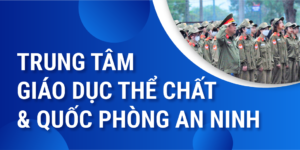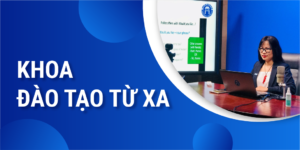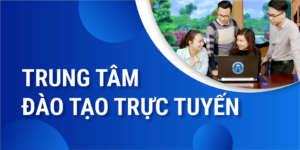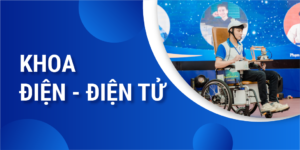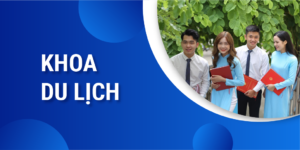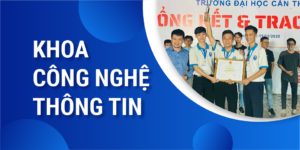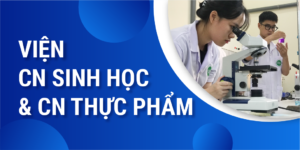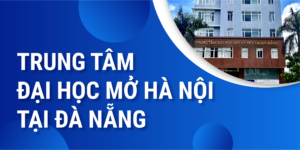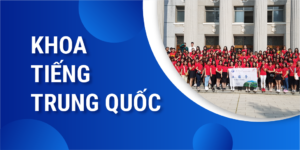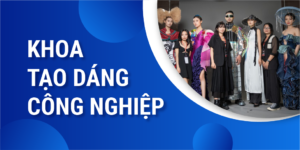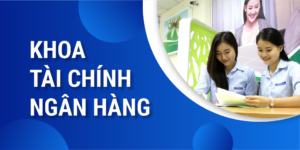- Câu hỏi 25357:
Read the following article and decide if the statement below is TRUE (A), FALSE (B) or NOT GIVEN (C)
Liverpool city council want to clear the city of fat pigeons. They say that that people are feeding the birds, which makes them fat. The pigeons get bigger because their normal diet would consist of seeds and insects, not high-fat junk food they are eating in the city centre.
The council want people to know that everyone who feeds the pigeons is responsible for the streets being so crowded with these birds. They hope to encourage the birds to move away from the city centre and into parks and open spaces.
Ten robotic birds have been brought into the city centre to scare the pigeons away and visitors are asked not to give the pigeons any food. The mechanical birds - known as 'robops' - will sit on the roofs of buildings. They can be moved around to different locations. They look like a peregrine falcon, which is a bird that kills pigeons. They even make noises and flap their wings to scare the pigeons. They hope that the pigeons will go away before the city becomes the European Capital of Culture in two years.
Statement: Pigeons get fat because they eat seeds and insects.
A. TRUE
B. NOT GIVEN
C. FALSE
- Câu hỏi 25847:
Read the following article and decide if the statement below is TRUE (A), FALSE (B) or NOT GIVEN (C)
Some scientists have predicted that healthy adults and children may one day take drugs to improve their intelligence and intellectual performance. A research group has suggested that such drugs might become as common as coffee or tea within the next couple of decades.
To counter this, students taking exams might have to take drugs tests like athletes. There are already drugs that are known to improve mental performance, like Ritalin, which is given to children with problems concentrating. A drug given to people with trouble sleeping also helps people remember numbers.
These drugs raise serious legal and moral questions, but people already take vitamins to help them remember things better, so it will not be a simple problem to solve. It will probably be very difficult to decide at what point a food supplement becomes an unfair drug in an examination.
Statement: Food supplements are unfair.
A. FALSE
B. TRUE
C. NOT GIVEN
- Câu hỏi 25859:
Read the following article and choose the best answer for the following question:
For one group of children aged between ten and fifteen, Saturdays are spent learning the art of serious cooking. Their weekly lessons in small classes are so popular that there is a waiting list of 30 children who want to do the course. Parents pay $ 280 for the course where their children can have fun and learn how to make good food,
Class member Bill, aged ten, says, ‘I love my mum’s cooking and now I can do it better than her. The teachers make us laugh, especially when we sit down with them to share the good we’ve made’.
Flora is twelve, and she’s having problems preparing onions. ‘I love cooking. I did a meal for ten friends which they really enjoyed. Then my mum suggested I take up a hobby, instead of doing nothing at weekends. I was happy staying at home, so I wasn’t too keen at first. I’m really glad I decided to come, though’.
Their teacher, Phillipe, says, ‘It’s great fun. Children pay attention and remember things better than adults, although the kitchen isn’t always as tidy when they’re cooking! As adults, we’re always learning more about food. If parents interest their children in cooking while they are young, they’ll have enough skill to make food for themselves when they leave home.
Question: What is the writer trying to do in the text?
A. advertise schools that teach people how to cook.
B. describe how some children spend their spare time.
C. warn parents not to expect too much from their children.
- Câu hỏi 25866:
Read the following article and decide if the statement below is TRUE (A), FALSE (B) or NOT GIVEN (C)
Siem Reap is a small town near the world famous temple of Angkor Wat. The town is charming and worth exploring, with some fine examples of Khmer and French colonial architecture set among the more modern developments. Nowadays, visitors are flocking in, using it as a base for visits to the nearby temples.
From the 9th to the 14th centuries, when Europe was still struggling out of the Dark Ages, the Cambodian Empire of Angkor covered most of present-day Cambodia, Laos, Vietnam, and Thailand. The heart of this empire during the 12th century was the ancient capital of Angkor Thom, near present day Siem Reap, the site of the world’s largest temple complexes, which were rediscovered in 1861.This spectacular city was built over 30 years under the reign of King Suryavarman II (1113-1150). The area covers about 400 square kilometres and is full of the finest examples of Khmer art and architecture. Tourists are always amazed at the scale of the place.
In Angkor Wat you will find more than 100 stone monuments and temple buildings, each of which contains countless statues, sculptures and reliefs that have weathered extremely little over the last 800 years. To see the whole thing can take several days. The most important temples to visit in the area are Angkor Wat, especially at sunrise or sunset; Angkor Thom, the remains of the capital; Ta Prohm, a palace overgrown by jungle; and Bayon.
Visas are required to enter Cambodia. You can obtain one on arrival at Siem Reap International Airport for $20, and 1 passport photo is required per person. You will also need another passport photo for the Angkor Temple Entrance Pass. Please ensure you take comfortable walking shoes, light clothing and plenty of water to drink as it is very hot there. The most commonly accepted currency in Cambodia is the US dollar.
Statement: Angkor Wat was the capital of the Cambodian empire.
A. NOT GIVEN
B. TRUE
C. FALSE
- Câu hỏi 25867:
Read the following article and choose the best answer for the following question:
Orbis is an organization which helps blind people everywhere. It has built an eye hospital inside an aeroplane and flown it all over the world with an international medical team. Samantha Graham, a fourteen-year-old schoolgirl from England, went with the plane to Mongolia, Samatha tells the story of Eukhtuul, a young Mongolian girl.
Last year, when Eukhtuul was walking home from school, she was attacked by boys with sticks and her eyes were badly damaged. Dr Duffey, an Orbis doctor, said that without an operation she would never see again, I thought about all the everyday things I do that she couldn’t , things like reading schoolbooks, watching television, seeing friends, and I realized how lucky I am’.
‘The Orbis team agreed to operate on Eukhtuul and I was allowed to watch, together with some Mongolian medical students. I prayed the operation would be successful. The next day I waited nervously with Eukhtuul while Dr Duffey removed her bandages. ‘In six months your sight will be back to normal’, he said. Eukhtuul smiled, her mother cried, and I had to wipe away some tears, too!’
‘Now Eukhtuul wants to study hard to become a doctor. Her whole future has changed, thanks to a simple operation. We should all think more about how much out sight means to us.
Question: After meeting Eukhtuul , Samantha felt
.
A. grateful for her own sight.
B. proud of the the doctor’s skill.
C. surprised by Eukhtuul’s courage.
- Câu hỏi 676178:
Read the following article and decide if the statement below is TRUE (A), FALSE (B) or NOT GIVEN (C)
Considering their wedding cost over $20,000 and took a year and a half to organize, you would be surprised to hear that Richard and Victoria Hammond now intend to forget it. Well, almost.
"It was a wonderful wedding, an unbelievable day," says Victoria. "But we have so much we want to do together now, we are both looking to the future." Her husband, banker and amateur race driver Richard, agrees. "Both our minds are now fixed firmly on the future. I'll never forget our wedding ceremony or the reception we had at a cliff-side hotel afterwards, but there's so much we want, so many hopes. Our marriage is so much more important than the wedding."
"At the moment, we are still living with my parents," explains Victoria, "so our first wish is to find our own place. We intend to start looking for a new house with all the modern conveniences in the suburbs in the new year." Both Victoria and husband Richard have a lot of siblings. Do they intend to add to the extended Hammond family? "We plan on having two or three children ourselves," Richard tells me. "Victoria is just wonderful with children and I can get 3 years paternity leave from my work, which is just perfect."
The young couple has just returned from a two-week honeymoon spent in an authentic Scottish castle. Both the newly-weds are big travel lovers and Richard hopes this will continue. "I would like to go travelling as much as possible together. Travelling with someone else is such a sharing experience. I think it's sad to experience all the wonderful places in the world and have no-one else there." Victoria also has another great travel ambition that she might have to do alone. "I have always been fascinated by safari and my real wish is to go on safari. Richard has no interest in wildlife though."
And what about the marriage itself? In a world with such a high divorce rate, how do Richard and Victoria hope to avoid all the problems that beset so many other couples? Richard explains thoughtfully that "our ambition is to always talk to each other. If you stop communicating, what chance do you have?" His wife goes along with that completely. "I hope that we can speak about things, but also not expect everything to be easy. I think many people expect the wedding to be the end of getting to know each other. I think it's the start."
Statement: Richard and Victoria have identical tastes regarding vacations.
A. FALSE
B. NOT GIVEN
C. TRUE
- Câu hỏi 676190:
Read the following article and decide if the statement below is TRUE (A), FALSE (B) or NOT GIVEN (C)
Come and sail on a Crystal Cruise ship. We have three ships: The Crystal Queen, The Crystal Princess, The Crystal Palace.
Come and sail in luxury on cruises around the Caribbean Sea for 7 or 14 days.
Our seven-day cruise costs $2000 and our two-week cruise is $3500.
A typical one week cruise
Day One - departure from Miami
Day Two - free day in Nassau, in The Bahamas
Day Three - near Haiti
Day Four - visit Puerto Rico and Antigua
Day Five - free day in Barbados
Day Six - free day in Port of Spain, Trinidad
Day Seven - travel to Caracas, Venezuela
Day Eight - fly home.
All food and drink is included in the price of your cruise (except for alcoholic drinks). Our cruise ships all have a casino, a cinema, a five-star restaurant, a theatre, a library and a fully equipped gymnasium.
If you prefer to go on a cruise in another part of the world, we also organize cruises in the Baltic Sea and the Mediterranean.
Our ships carry over 2000 passengers and we have nearly 600 crew members.
So come on board today for the holiday of a lifetime!Call immediately: 020-4455832
Statement: You can go on a cruise for two weeks.
A. FALSE
B. NOT GIVEN
C. TRUE
- Câu hỏi 676195:
Read the following article and decide if the statement below is TRUE (A), FALSE (B) or NOT GIVEN (C)
Come and sail on a Crystal Cruise ship. We have three ships: The Crystal Queen, The Crystal Princess, The Crystal Palace.
Come and sail in luxury on cruises around the Caribbean Sea for 7 or 14 days.
Our seven-day cruise costs $2000 and our two-week cruise is $3500.
A typical one week cruise
Day One - departure from Miami
Day Two - free day in Nassau, in The Bahamas
Day Three - near Haiti
Day Four - visit Puerto Rico and Antigua
Day Five - free day in Barbados
Day Six - free day in Port of Spain, Trinidad
Day Seven - travel to Caracas, Venezuela
Day Eight - fly home.
All food and drink is included in the price of your cruise (except for alcoholic drinks). Our cruise ships all have a casino, a cinema, a five-star restaurant, a theatre, a library and a fully equipped gymnasium.
If you prefer to go on a cruise in another part of the world, we also organize cruises in the Baltic Sea and the Mediterranean.
Our ships carry over 2000 passengers and we have nearly 600 crew members.
So come on board today for the holiday of a lifetime!Call immediately: 020-4455832
Statement: The cruise may start in Spain.
A. NOT GIVEN
B. FALSE
C. TRUE
- Câu hỏi 676213:
Read the following article and decide if the statement below is TRUE (A), FALSE (B) or NOT GIVEN (C)
The makers of a controversial computer game about bullying have decided to go ahead and launch it despite calls for it to be banned. In the game, players take on the role of a new students at a school and have to fight the bullies, by punching them or hitting them with a baseball bat.Critics have said that the game encourages violence, but the makers deny this and say that, while there is violence in the game, it is just an amusing look at school life, besides which, the violence in the game is directed against the bullies to protect pupils who are being bullied. The makers also say that players will learn to stand up to bullies.A British politician, a former minister, has called for it to be banned as it might affect the way young people perceive violence.Anti-bullying charities have said that the game might make people respond violently to bullies, which might make things more complicated and result in injuries.
Statement: The anti-bullying charity thinks the game is good because it might make pupils stand up to bullies.
A. NOT GIVEN
B. FALSE
C. TRUE
- Câu hỏi 676227:
Read the following talks about eating out and answer the question below:
1.The last time I went to a restaurant was about 2 months ago. My wife and I wanted to celebrate our wedding anniversary with a good meal so we went to an expensive Italian restaurant in downtown Lisbon. We both had pasta to start and for the main course my wife ordered a steak and I chose fish. For dessert we both ate chocolate cake topped with fresh cream. Delicious!
2. I went to a restaurant yesterday evening with my sister's children. It wasn't very expensive and the menu was very limited. We all had a burger and French fries, and drank cola. It wasn't very good.
3. My boyfriend loves spicy food so this restaurant was perfect. The waiters were all really friendly and polite, and they played traditional sitar music which was very relaxing. The menu offered vegetarian dishes as well as meat dishes served with rice and a sauce - it depended on how hot you wanted it! I chose a mild beef curry but my boyfriend had a lamb 'vindaloo' - he also drank 2 liters of water!!
4. My class at the university went there last weekend. It's a very popular type of restaurant in my country. It generally offers one type of food (a kind of bread with cheese and tomato sauce) which you then choose what ingredients to add on top of it. I asked for olives and mushrooms on mine and my classmates each had something different so we could taste a piece of each person's meal.
Question: In which text didn't the person enjoy their meal?
A. Paragraph 1
B. Paragraph 2
C. Paragraph 3


